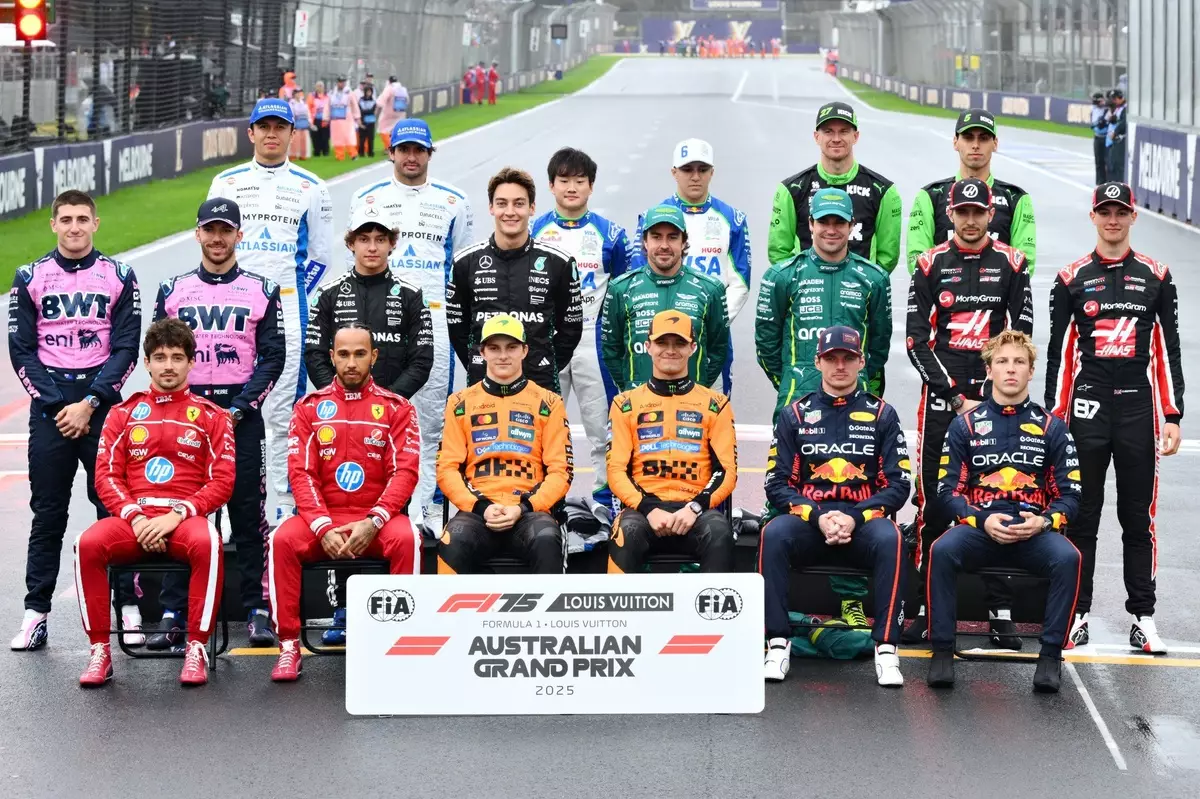As the 2026 Formula 1 season looms on the horizon, motorsport enthusiasts and insiders alike find themselves immersed in an intricate web of speculation, negotiations, and strategic moves. Unlike previous years where driver transfers seemed almost routine, this cycle is marked by heightened uncertainty and a whirlwind of variables. While contracts, performance metrics, and team dynamics are crucial, broader factors such as technological shifts, management upheavals, and new entrants add layers of complexity. The overall picture remains hazy, but one thing is clear: the driver lineup for 2026 will be shaped by a delicate interplay of ambition, performance, and opportunity.
The heart of this maelstrom is the ongoing saga surrounding Max Verstappen. Despite securing a lengthy contract with Red Bull until 2028, whispers in the paddock suggest that the deal is not as ironclad as it appears. Verstappen’s aggressive, winning-driven approach has pushed him to the forefront, yet performance-based clauses in his contract could provide him an exit door if certain milestones are unmet. The recent fluctuations in Red Bull’s performance, management shifts like Christian Horner’s departure, and the ambitious, yet untested Red Bull Powertrains project all influence Verstappen’s calculus. If the Dutch superstar considers a move, Mercedes, with its long-standing admiration and strategic capacity, might offer the only credible alternative to stay at the top of the grid. Toto Wolff’s interest in Verstappen underscores the desire to secure a driver capable of elevating Mercedes back to championship contention, yet the snag lies in whether the Dutchman is willing to leave a team where he is undisputed leader.
Meanwhile, Red Bull’s second seat remains highly contentious. Yuki Tsunoda’s contract expiry, combined with Isack Hadjar’s standout performance in the junior ranks, adds intrigue to who will fill the vacancy. The choice could be decisive for Red Bull’s future, especially under the new Ford-assisted engine program—an initiative that’s shrouded in uncertainty and could impact the team’s competitiveness. For Verstappen, his possible departure doesn’t just open a seat; it could reposition the entire driver market, especially if teams like Ferrari or Mercedes decide to make strategic changes in response.
Impact on Title Contenders: A Ripple Effect on Contracts
The ripple effects of Verstappen’s situation extend beyond Red Bull, influencing driver deals across the grid. George Russell, a key figure for Mercedes, finds himself at a crossroads. His contract renewal negotiations are already underway, but the specter of Verstappen’s potential departure and the unknown future of the Silver Arrows’ car performance could influence his decisions. Russell’s dynamic partnership with Lewis Hamilton might be tested if team strategies shift or if Mercedes opts to pursue more experienced drivers to accelerate their championship prospects. It’s a high-stakes game of uncertainty—does Russell risk waiting for a clearer future or seek stability elsewhere?
At Mercedes, the spotlight also falls on Kimi Antonelli, a promising rookie whose current contract is expiring. While he has exhibited flashes of brilliance, his recent struggles could prompt Mercedes to either double down or reposition him for development elsewhere. The team’s management appears to be weighing the risks of investing further in a young driver amid an evolving competitive landscape.
Further down the grid, the arrival of Cadillac into Formula 1 introduces a new dynamic. The GM-backed team’s entry is more than just a bid for technological innovation; it signals a push for strategic dominance. Rumors suggest Sergio Perez, whose experience and adaptability are well-regarded, may be the first driver signed by Cadillac, bringing a seasoned hand into a new era. The team’s willingness to invest heavily indicates a desire to challenge established giants—meaning their driver choices will be just as crucial as their car development.
Other familiar names like Valtteri Bottas, Mick Schumacher, Zhou Guanyu, and emerging talents such as Jak Crawford are also in the mix. While they might not yet be front-runners for guaranteed seats, their performances in the coming months could determine whether they land a seat in the newest, most ambitious team on the grid or remain on the periphery of F1’s elite.
The Broader Strategic Implications for 2026’s Grid
The 2026 driver market encapsulates far more than individual talent and contractual clauses. It reflects the shifting power balance within F1, driven by technological advancements, changes in team leadership, and the ambition of new entrants to reshape the sport’s competitive landscape. With an emphasis on sustainability, new engine regulations, and teams vying for dominance, driver decisions are now intertwined with strategic foresight.
The entry of Cadillac, unprecedented as an American manufacturer, exemplifies this new chapter. Their financial backing and long-term vision suggest they will seek top-tier talent, even if that means recruiting from rival teams. The likes of Perez or Bottas, with their extensive experience, could serve as foundational pillars for the nascent project, but only if the team’s vision aligns with their own aspirations.
In essence, the 2026 grid isn’t just about who can drive quickly—it’s about who can adapt, strategize, and capitalize on opportunities in a rapidly changing environment. The interconnectedness of team contracts, political machinations, and technological developments means that every move in the coming months will resonate for years to come, ultimately determining the shape of F1’s future.
By critically examining the current landscape, it’s apparent that the driver market is less about individual accolades and more about strategic positioning. The sport’s top teams are meticulously crafting their next chapters, knowing that the stars they sign now will influence the championship battles of tomorrow. As we edge closer to the off-season, one thing remains certain: the 2026 grid will be a battleground for talent, innovation, and ambition unlike any before it.

